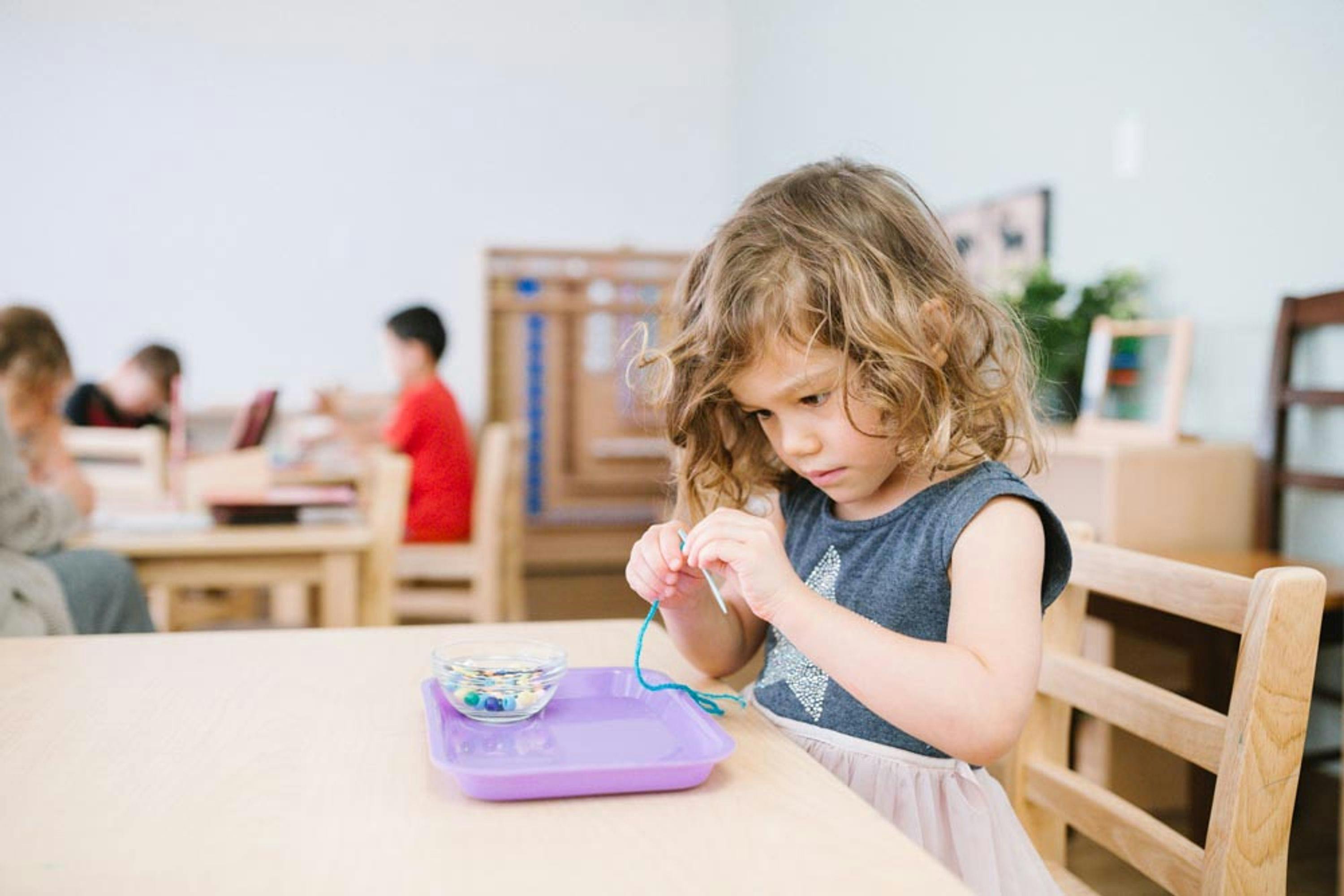Independence Through the Years
One of the most important tasks for a Montessori guide is to foster independence in her students. This crucial skill is taught to children in every community, from Nido to Elementary
The Guidepost Team
One of the most important tasks for a Montessori guide is to foster independence in her students. This crucial skill is taught to children in every community, from Nido to Secondary.
Independence in the Nido classroom
The infants in Nido sleep on floor beds, so that when they learn to roll over or crawl off the bed, they may do so on their own accord. They need not cry at the edge of a crib waiting for an adult to move them. During waking hours, they spend time on textured rugs observing their environment, which might include contrasting mobiles or full length mirrors. They are also provided with age-appropriate lessons on low shelves, which they may crawl up to and explore.
Independence in the Toddler classroom
When the child enters Toddler House, they enter a world of their own. They receive lessons on dressing themselves, grooming, food preparation, and, ultimately, toilet training. When the child accomplishes these tasks for themselves, you can see the spark in their eyes as well as the smile on their face.
Toddlerhood is a time when the child begins to realize they are a separate being from their guardian. They learn they can make decisions for themselves, such as when to eat or what lesson to work on. This gives them a sense of purpose and motivation. The daily routine of the classroom is the child’s first exposure to time management. They begin to understand that first they work, then go to the playground, then eat lunch, then nap, and then it is finally time to go home. This routine will serve them well in the elementary years when they have to manage their own time effectively.
Independence in Children's House
When the child enters Children’s House, they are exposed to the world of knowledge. The skills of reading and arithmetic provide the child with a new sense of independence. Now they can choose topics of interests, whether it be writing, science, or art. The guide observes and follows the child, providing them with appropriate lessons that will engage the learner and motivate him to practice the lessons until mastery.
Practical Life lessons are crucial at this age, as they continue to teach children how to take care of themselves as well as the environment. Such lessons might include tying shoelaces, setting a table, or taking care of a class pet.
In the last year of Children’s House, the child takes on the important role of being a leader in the classroom. They no longer nap and are able to help the younger ones with lessons.
Independence in Elementary
The elementary years are when the child begins to practice the independence learned in the previous communities.
They use the materials to complete weekly goals and learn how to manage their time using a work journal. The work journal teaches the child about short-term and long-term goals and how to keep track of their work, much like adults do with their calendars.
They learn how to dig deep into topics of interest and conduct research with reliable resources. Some projects may be collaborative but still require independent work and delegation of responsibility. This is also a time of great social interaction. The students learn how they fit into their school community and the outside world. They may argue with friends, but hopefully that conflict allows them to build empathy and problem-solving skills. The child learns what values are important to them and how to stand up for what they believe in.
Independence is a crucial skill for life and it is at the heart of a Montessori education. It is taught to the child directly and indirectly from birth to high school and practiced for the rest of their adult life.
The Guidepost Team
The Guidepost Team is a group of writers and educators dedicated to helping demystify all things Montessori.
Sign up for our newsletter
Get started with our community today! Sign up for resources.
